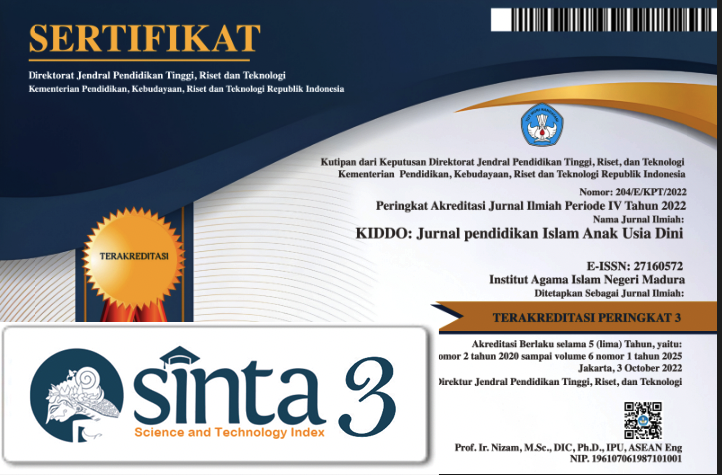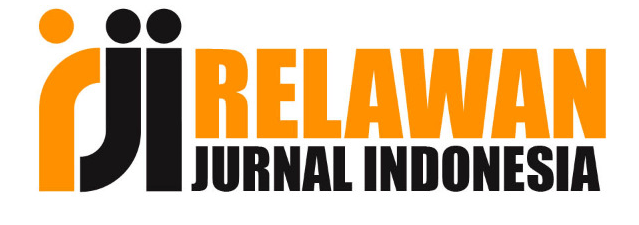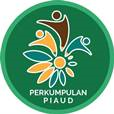Menciptakan Lingkungan Belajar Aman dan Nyaman di Lembaga Pendidikan Anak Usia Dini
 Abstract views: 1390
,
Abstract views: 1390
,
 PDF downloads: 3760
PDF downloads: 3760
Abstract
This study explores the importance of creating a safe and comfortable learning environment in early childhood education (PAUD), involving both physical and psychological aspects. A safe environment includes strong and secure buildings, first aid equipment (P3K), anti-violence policies, and the physical and psychological safety of children. The research method used is qualitative with a library research approach, examining various sources such as books, scientific articles, and important documents. The research results indicate that a safe learning environment is crucial to support the holistic development of children. Physical aspects include the security of buildings, surroundings, and first aid facilities, while psychological aspects encompass policies against physical violence, sexual abuse, and bullying. Policies and concrete steps such as implementing non-violent sanctions, positive discipline, and the involvement of parents and the community are essential to create a positive and productive learning atmosphere.
Downloads
References
Alifiasari, D. N. (2022). Pengaruh Tindakan Perundungan Terhadap Sikap Remaja Korban Perundungan Di Kota Bandung. Universitas Komputer Indonesia.
Datu, A. (2023). Sinergi Orang Tua dan Sekolah dalam Pendidikan Seksual pada Anak terhadap Upaya Pencegahan Kekerasan Seksual. Attractive : Innovative Education Journal, 5(1), 394. https://www.attractivejournal.com/index.php/aj/
Dewi, N. C. (2020). Jurnal Primearly - 54-. III(1), 54–66.
Harahap, N., & Hasibuan, H. B. (2023). file:///C:/Users/acer/Downloads/scholar (46).ris. Murhum: Jurnal Pendidikan Anak Usia Dini, 4(1), 470–481.
Hasibuan, A. A. (2018). Kontribusi Lingkungan Belajar Dan Proses Pembelajaran Terhadap Prestasi Belajar Siswa di Sekolah. Jurnal Tarbiyah, 25(2), 1–20.
Hidayatulloh, M. A. (2014). Lingkungan Menyenangkan dalam Pendidikan Anak Usia Dini: Pemikiran Montessori. Nadwa: Jurnal Pendidikan Islam, 8(1), 139–154.
Ismail, W., Rauhun, R., Mutmainnah, M., Nurwahilda, N., Misbawati, M., & Hasanah, U. (2019). Pengelolaan Lingkungan Pembelajaran Di Paud Kemala Bayangkari. NANAEKE: Indonesian Journal of Early Childhood Education, 2(2), 121. https://doi.org/10.24252/nananeke.v2i2.11625
Istiqomah, N., & Maemonah, M. (2022). Konsep dasar teori perkembangan kognitif pada anak usia dini menurut jean piaget. Khazanah Pendidikan, 15(2), 151–158.
Kemendikbud. (2021). Perundungan / Bullying Yuk ! Perundungan / Bullying Yuk !, 3–24. https://id.z-library.se/book/21404584/64bccb/stop-perundunganbullying-yuk.html
Kemendikbudristek. (2022). Panduan Penyelenggaraan PAUD Berkualitas Lingkungan Belajar Aman seri 6. Direktorat Pendidikan Anak Usia Dini.
Kesuma, F., Nasution, W., & Ritonga, R. S. (2023). Penerapan Edukasi Seks Pada Anak Usia 4-5 Tahun Dalam Meminimalisir Kasus Sexual Abuse. 6, 587–594.
Mayasari, A., Hadi, S., & Kuswandi, D. (2019). Tindak Perundungan di Sekolah Dasar dan Upaya Mengatasinya. Jurnal Pendidikan: Teori, Penelitian, Dan Pengembangan, 4(3), 399–406.
Mboro, W. M., Ludji, I., & Lusi, A. B. (2024). Tinjauan Etika Anti-Kekerasan Terhadap Peran Orang Tua Dalam mendidik Remaja 15-17 Tahun Di GMIT Emaus Liliba. CARAKA: Jurnal Teologi Biblika Dan Praktika, 5(1), 43–61. https://doi.org/10.46348/car.v5i1.269
Mufida, A. Y., & Hibana. (2023). Mewujudkan Lingkungan Belajar Aman Pada Satuan PAUD Perspektif “Seri 6 PAUD Berkualitas (KEMENDIKBUDRISTEK). 6, 95–112.
NIM, I. K. A. S. (2019). IMPLEMENTASI PERATURAN MENTERI PENDIDIKAN NASIONAL NOMOR 58 TAHUN 2009 TENTANG STANDAR PENDIDIKAN ANAK USIA DINI (PAUD) DI PAUD PEMBINAAN KESEJAHTERAAN KELUARGA (PKK) KECAMATAN PONTIANAK SELATAN KOTA PONTIANAK. PublikA Jurnal Ilmu Administrasi Negara (e-Journal), 7(3).
Nurulhuda, D., Nirawati, M. A., & Mustaqimah, U. (2019). Desain Arsitektur Ramah Anak Pada Bangunan Paud Untuk Merespon Perilaku Anak Usia Dini. Senthong, 2(1), 121–132.
Purnama, S., Jannah, R. R., Jazariyah, & Sabiati, A. (2020). Desain Interior dan Eksterior Pendidikan Anak Usia Dini. In Preschool : Jurnal Perkembangan dan Pendidikan Anak Usia Dini (Vol. 1, Issue 2).
Qureshi, F. M., Khalid, N., Nigah-e-mumtaz, S., Assad, T., & Noreen, K. (2018). First aid facilities in the school settings: Are schools able to manage adequately? Pakistan Journal of Medical Sciences, 34(2), 272-276file:///C:/Users/acer/Downloads/Penyimpanga. https://doi.org/10.12669/pjms.342.14766
Rachman, S. A. (2020). 408-Article Text-1149-1-10-20200918. Pentingnya Penyediaan Lingkungan Belajar Yang Kondusif Bagi Anak Usia Dini Berbasis Kunjungan Belajar Di Masa New Normal, 6(3). https://doi.org/10.5281/zenodo.4035268
Rismayani, R., Afiif, A., Alwi, B. M., & Ismail, I. (2021). Pencapaian indikator sekolah ramafile:///C:/Users/acer/Downloads/scholar (45).rish anak pada paud Di kecamatan majauleng kabupaten wajo. NANAEKE: Indonesian Journal of Early Childhood Education, 4(1), 26–41.
Sadiah, G. S., Romadhona, N. F., & Gustiana, A. D. (2020). Penerapan Layanan Kesehatan Dan Gizi Dalam Penyelenggaraan Paud Holistik Integratif Di Tk Alam Pelopor Rancaekek. Edukid, 17(1), 50–64.
Setiani, R. E. (2016). Pendidikan anti kekerasan untukfile:///C:/Users/acer/Downloads/Tinjauan_Etika_Anti-Kekerasan_Terhadap_Peran_Orang.pdf anak usia dini: Konsepsi dan implementasinya. Golden Age: Jurnal Ilmiah Tumbuh Kembang Anak Usia Dini, 1(2), 39–56.
Sholihah, A. K. (2021). pengaruh lingkungan dan fasilitas belajar terhadap prestasi belajar siswa pada mata pelajaran IPS kelas VIII di SMPN 1 Sambit Ponorogo Tahun ajaran 2020/2021. IAIN Ponorogo.
Syafri, F. (2020). file:///C:/Users/acer/Downloads/scholar (48).ris. Jurnal Pendidikan AURA (Anak Usia Raudhatul Atfhal), 1(1), 16–21.
Windari, R. (2022). kebijakan formulasi larangan hukuman fisik (Corporal Punishment) pada anak dalam lingkup pengasuhan dan pendidikan. Surabaya: Scopindo Media Pustaka.
Wulandari, H., & Salsabila, S. S. (2023). Analisis Standarisasi Sarana Dan Prasarana Sekolah Paud Dalam Memfasilitasi Kegiatan Anak. Jecie, 7(1), 2614–4387. https://doi.org/10.31537/jecie.v7i1.1147
Copyright (c) 2024 Habibah Afiyanti Putri, Hibana, Hibana

This work is licensed under a Creative Commons Attribution 4.0 International License.
-
The journal operates an Open Access policy under a Creative Commons 4.0 International license. The terms of the license are:
Share— copy and redistribute the material in any medium or format
Adapt— remix, transform, and build upon the material for any purpose, even commercially.
1. Authors retain copyright and grant the journal right of first publication with the work simultaneously licensed under a Creative Commons License.that allows others to share the work with an acknowledgement of the work’s authorship and initial publication in this journal
2. Authors are permitted and encouraged to post their work online (e.g., in institutional repositories or on their website) prior to and during the submission process, as it can lead to productive exchanges, as well as earlier and greater citation of published work (See The Effect of Open Access).
Jurnal Kiddo is licensed under a Creative Commons
n Access).














